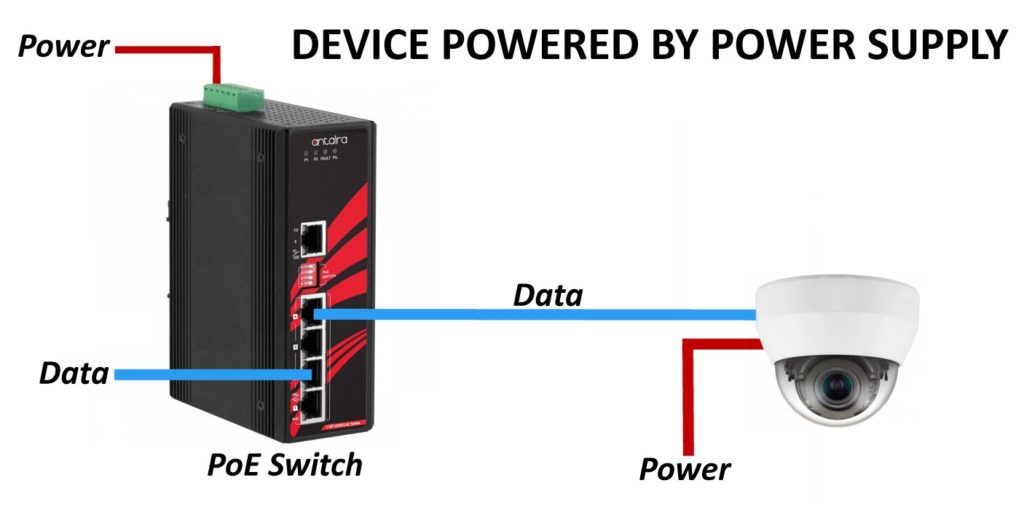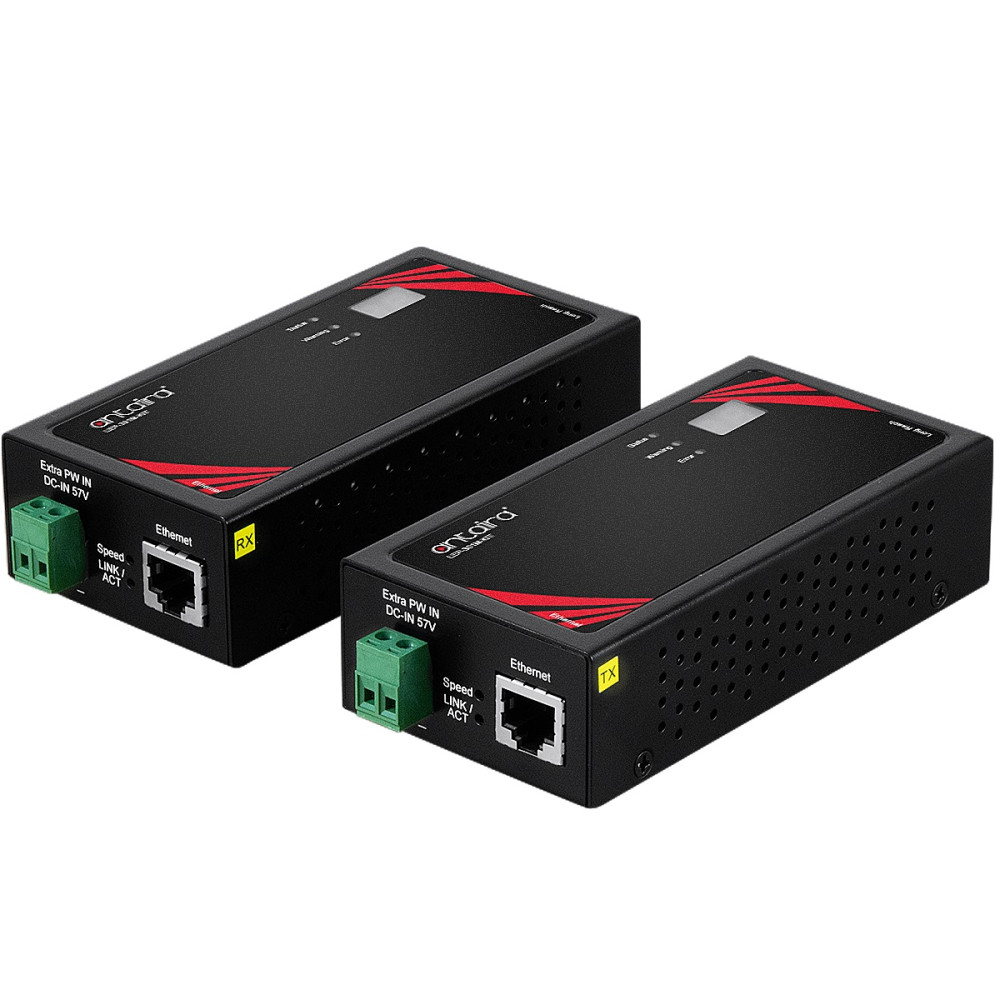PoE technology can deliver better connectivity, simpler and safer wiring, and streamlined operations to just about any business or industrial network. But navigating the world of Power over Ethernet can be confusing.
Here’s what businesses like yours need to know about PoE devices and how they can improve your network operations.
Key Takeaways
- PoE (Power over Ethernet) delivers power and data over a single Ethernet cable, simplifying installations and reducing infrastructure costs.
- Businesses can use PoE switches, injectors, and extenders to support security cameras, VoIP phones, and other low-voltage network devices.
- Managed PoE switches offer full network control and security, while unmanaged models provide a plug-and-play solution.
- Injectors and splitters bridge compatibility gaps, powering non-PoE or PoE-only devices as needed.
- Westward Sales offers a wide range of industrial-grade PoE devices and supports businesses in selecting the right solutions for their needs.
What Are PoE Devices?
PoE devices are electronic devices that receive both low-voltage power and data over a single Ethernet cable. By delivering power and data over a single cable, PoE devices greatly simplify cabling and reduce the number of unnecessary higher-voltage lines and connection points.
PoE devices come in many forms, including security cameras, VoIP phones, PoE network switches, PoE injectors and splitters, and PoE extenders.
What Is PoE Technology?
The “PoE” stands for “power over Ethernet,” a term that describes a technology where low-voltage power is delivered via the same Ethernet cable that delivers data. It’s a protocol that manufacturers and installers follow to ensure power flows freely and safely to PoE devices, only when and where it’s needed.
PoE technology was first developed by Cisco in the year 2000. Its first widespread application was voice over IP (VoIP) phones. Traditional landline phones didn’t need external power; instead, they received 48 volts of DC power through the copper phone line. Cisco developed a scalable way to do the same thing over unused wires in an Ethernet cable, and PoE was born.
A few years later, the IEEE and the Ethernet Alliance ratified a standard for PoE technology, IEEE 802.3af, providing manufacturers with a standardized method for both configuring PoE devices and ensuring that non-PoE devices do not receive unwanted power.
Westward Sales Guide to PoE Devices
Westward Sales offers a wide range of PoE devices with a focus on industrial-grade network equipment, including outdoor-rated Power over Ethernet devices. These devices can be grouped into categories based on functions and applications.
Managed PoE Switches
All network switches direct the flow of traffic through a network. Since network switches generally don’t require significant power, the platform can adapt well to Power over Ethernet.
PoE managed network switches provide organizations and IT professionals with significantly greater configurability, encompassing both network/device settings, as well as network security, all without the need for separate power cables. A PoE switch can receive PoE and send power downstream to PoE devices plugged into the switch.
Because they can do more, they cost more than their unmanaged counterparts (see next section). They also aren’t plug-and-play: businesses need some technical acumen to get managed PoE switches up and running correctly.
Westward Sales carries a wide range of managed Ethernet switches with PoE ports, including many high-quality models from Antaira. The models vary considerably, with different numbers and types of ports, speeds, electrical standards (IEEE 803.3at and IEEE 802.3af), Layer 2 capabilities, and more.
For example, Antaira’s LMP-0800G-24-T is a PoE managed Ethernet switch offering 8 Gigabit PoE+ ports (30 watts per port), or choose the LMP-1204G-SFP with 12 ports (8 Gigabit PoE+ ports and 4 SFP slots). All Antaira switches include a five-year warranty.
Unmanaged PoE Switches
When you need to move quickly and don’t require detailed configuration, unmanaged switches save both time and money. These switches are almost plug-and-play: simply plug them in (using CAT 5 or better cables to carry both power and data) and they will start operating right away.
Unmanaged PoE switches work in nearly the same ways as their managed counterparts, but without the high configurability for network management. They are less secure and less robust, but still competent in many situations. Our unmanaged PoE switches come with a range of total ports, from small four-port units, like the LNP-0500, to rack-mountable 26-port versions like the LNP-2602G-SFP. Some models operate in extreme temperatures or at differing power levels as well.
PoE Injectors and Splitters
Power over Ethernet is a powerful choice for network infrastructure, but many businesses discover that not every device on their network is compatible with the protocol. On the other end of this spectrum, what if your network is essentially not using PoE, but then you want to add a PoE device that can’t be powered any other way?
PoE injectors and splitters are the solution to both of these conundrums.
A PoE injector, like the rail-mounted Patton 2110/PSE/EUI, receives a (power-free) data signal over Ethernet, then injects power into the open wire pairs on that cable. The data passes through uninterrupted but gains power, allowing down-the-line devices to operate using PoE and not external power. Some PoE injectors receive power over a separate Ethernet cable, while others receive power directly from a power supply.
PoE splitters, like the wall-mountable TRENDnet TI-SG104, essentially do the opposite: they receive both power and data through a single Ethernet cable, then split that signal into separate lines for data (still transmitted over Ethernet) and DC power (sent over a separate power cable). A PoE splitter enables an organization to power a non-PoE device downstream of PoE devices, eliminating the need for a separate power cable to that device.

PoE Converters
Fiber-optic networks offer tremendous speed and other advantages, but technology has its limits. Adoption isn’t nearly as widespread as the trusty RJ-45 connector found at the end of every Ethernet cable, and fiber isn’t very physically flexible, either.
Businesses operating with a fiber-optic network may need to use PoE devices that cannot accept a fiber-optic signal. PoE converters can bridge that gap, converting fiber communications from a standard Ethernet SFP to a PoE+ line. Some options:
PoE Extenders
Like many technologies, PoE has physical limits. Run a cable over a great enough distance, and the signal will degrade. PoE extenders like the Antaira LEP-401M-KIT help businesses extend PoE signals over a greater range without degradation. The more economical extenders double the standard 100-meter distance to 200 meters. Whereas the more sophisticated ones can allow a PoE run to reach a kilometer and beyond.
Frequently Asked Questions: PoE Devices for Business Networks
What kind of devices can be powered with PoE?
Should I choose a managed or unmanaged PoE switch?
Can I add PoE to an existing non-PoE network?
What is the maximum distance for PoE, and how can I extend it?
Where can I get help choosing the right PoE solution?
Simplify Your Network
Upgrading to PoE or expanding your existing network with additional PoE devices can significantly simplify your network setup, lower installation costs and risks, and help you focus on your business rather than on wiring and cable management.Westward Sales is here to help you navigate this space and make equipment decisions in this category. We’ll partner with you to find the most effective (and most cost-effective) solutions for your unique networking needs. Simply reach out and tell us about your situation and needs, and we’ll direct you to the best options for your specific needs.
